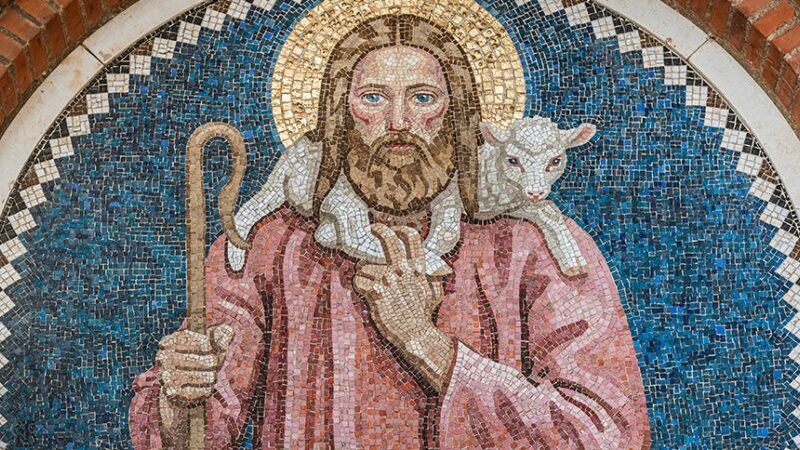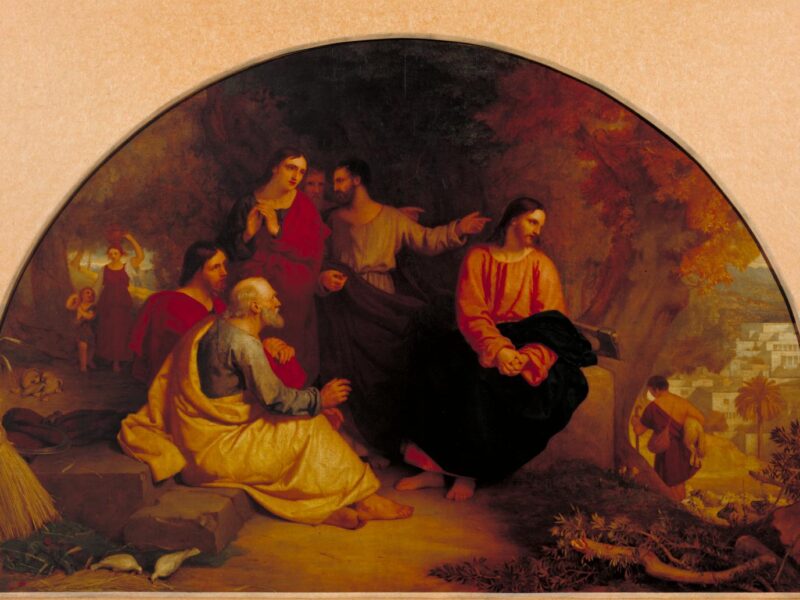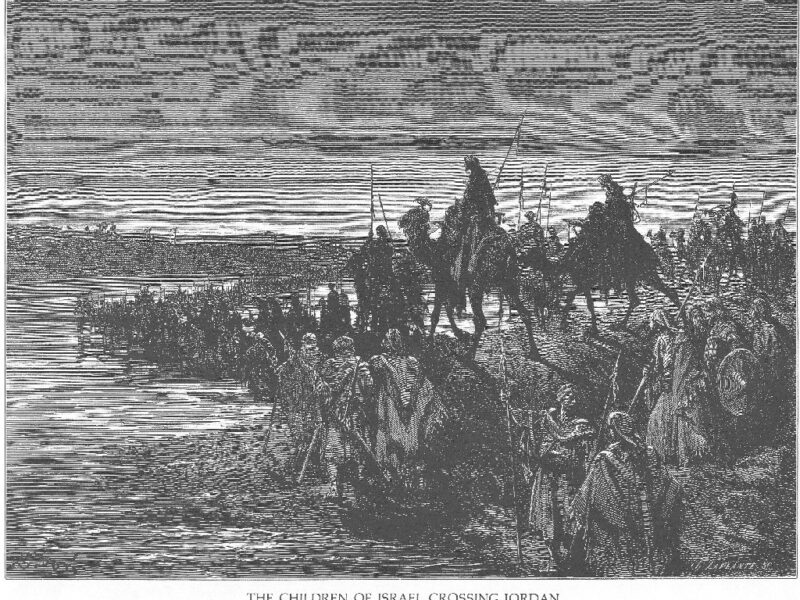
The Courts of the Lamb
What can a long-destroyed building teach us about our baptismal priesthood?

Reading: Hebrews 2:10-18
The following homily was preached to the student brothers during Compline. You can listen here or read below:
‘For every high priest is appointed to offer gifts and sacrifices.’ (Hebrews 8:3)
In the ancient Near East, temples were designed and built on a principle of courts: in a temple, different courts were for different categories of people and for different functions. The Temple which Our Lord knew in Jerusalem was also like this. There was the outer court, the court of the faithful, for men and women. The inner court, the court of priests and Israelites. The Temple building itself was entered only by the priests. And right at the heart of the Temple was the Holy of Holies, the place where the presence of God (the shekinah) dwelt. So the Temple was a series of radiating squares.
You can see this structure also in a Catholic church, perhaps especially in this one. The nave corresponds to the outer court of the Temple, the Court of the Faithful. The choir corresponds to the inner court. The Temple building itself, entered only by priests, is like the sanctuary. And finally, the Holy of Holies, where the presence of the Most High dwells, is the tabernacle. (This final point is especially moving for us as Catholics: in the Temple, the Bread of Presence, the same bread which King David ate, was man’s offering to God to signify God’s Presence in the Holy of Holies. In the Tabernacle is another bread, but it is God’s gift to man, which does not merely signify his presence but is God himself.) So when you come into a Catholic church, you enter a living imitation and realisation of the Temple in Jerusalem.
Now one thing needed in the Temple was water, and lots of it. Amongst other things, this was for the ritual purification of those who entered the Temple (and for the washing of the temple itself). And this water was channelled from Bethlehem.
The Catholic Church, that great family to which we belong by Baptism, is also like this: Christ, born in Bethlehem, wants to wash our sins away in his Church. And in that Church, there are different places for different people. Most do not go into the sanctuary; most do not come near it! It is the role of only some to minister in the sanctuary itself, close to the very presence – the Real Presence – of God. But what unites us is that we are all here to worship God, we are all here to offer him something; we are all here to make sacrifice.
Those who make sacrifices are performing a priestly action. When celebrate Jesus Christ the Eternal High Priest, we celebrate the sacrifice Jesus Christ made of himself. By our Baptism, we can take part in that sacrifice: every prayer, every sacrifice we offer to God, no matter how slight, imitates Jesus’ offering of himself – that one perfect eternal sacrifice – and our sacrifices derive their significance from that one offering.
In the Temple, then, we see an image of our baptismal priesthood. All of us are called to pray and make sacrifices. We do this in different ways: some are priests making sacrifice in the sanctuary on behalf of others, but most are not. Yet whatever sacrifice we make, we do it because we hope we will one day arrive into courts which are eternal, and where there will be no sin and no need for sacrifices, a place where there will no need for priests except one, whose offering of Himself washes our sins away.
Image: ‘Adoration of the Mystic Lamb’, Hubert and Jan van Eyck, from the Ghent Altarpiece, 1432



Margaret Connolly
Really interesting comparison of the Temple in Jerusalem with a Catholic Church A well written and carefully structured homily.
Lexi Green
This is an excellent homily. Thank you for sharing